Micaela Ezra is a soulful creative from Australia who lives in New York and has Sephardic and Ashkenazi roots in India, the Middle East, and Eastern Europe. She believes in the interconnectedness of our world, is ignited by Jewish tradition, and consciously crafts the legacy she’ll leave for her children.
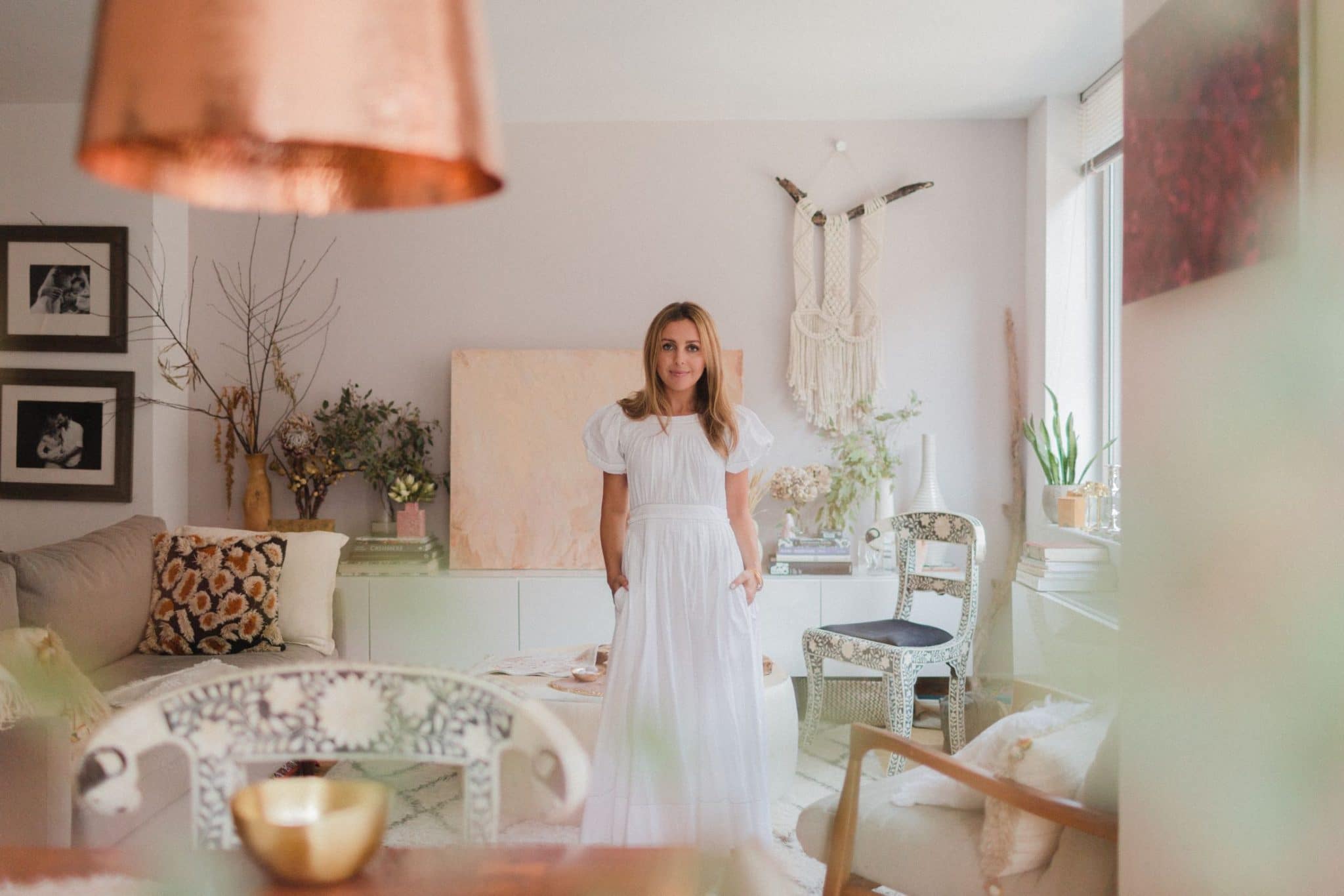
What is the meaning of your name?
The true story is that my father saw a racehorse Mikeala, and he was playing with the letters in his mind, and he thought, “Oh! The name Micaela.”
My Hebrew name is Michal.
I love the connection that we share with our Hebrew name. It’s the name of our soul.
When we give a name to our children, their soul actually already comes with a name, and we embody the divine spirit in order to have the intuition and a small amount of prophecy to decipher what the soul’s name actually is.
I believe that we’re just here to listen and uncover what our children need to be called, and that their name is connected to their purpose in life, who they are, what their soul’s mission here is, what their personality will be. There is a lot of foretelling in the spirit of their name.
Tell us about your background.
My father’s ancestors came from Iraq and Iran and moved to Calcutta, India in the late 1800s. My mother’s family came from Eastern Europe, went to Palestine before it was Israel, then came to Australia. My dad immigrated to Australia in 1964, so that’s where my parents met and where I grew up.
I had a beautiful, idyllic childhood in a loving home in a traditional Jewish community.
I went to Jewish day school, then I studied commerce. Part-way through my commerce degree, I realized that wasn’t really nourishing me. I was always studying design subjects, like jewelry design, textile design, and art history, alongside business subjects. I went to fashion school at the same time as doing my business degree. I completed both at 24, then I moved to New York for a job in the industry.
I came here with a bag full of samples and a portfolio and literally went around knocking on doors.
I had so much energy and optimism. If I’d known then what I know now, I probably would have felt so much more fearful, but I was very determined, passionate, excited, and sure that New York would be full of so much opportunity for me.
A few years later, when I was feeling that I may be ready to return to Australia, I met my husband, whose family is from Mexico, and life took a different turn. For now, we call New York home, and we have two beautiful daughters.
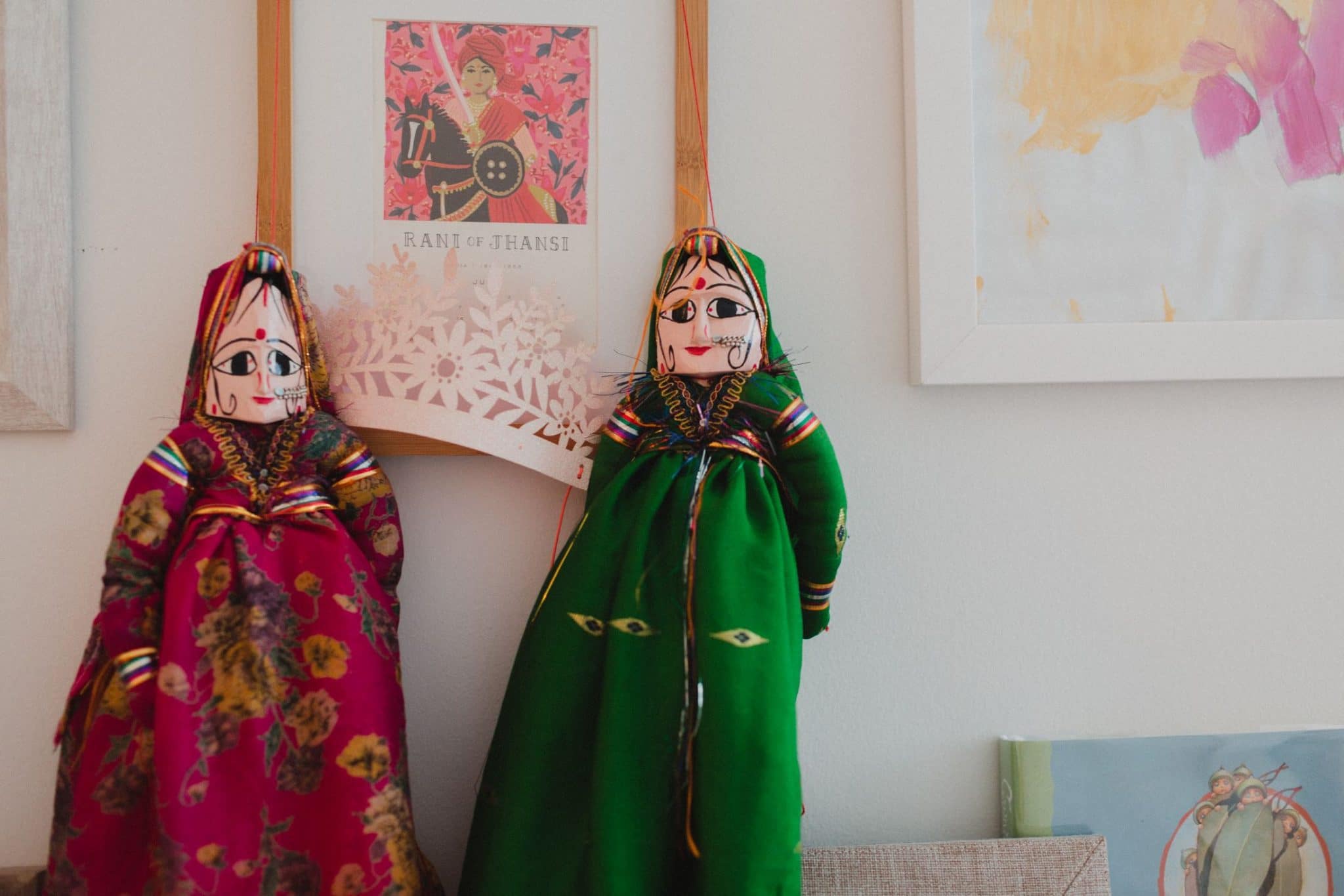
What was it like visiting India for the first time?
I went with my extended family, going to visit places that we had heard stories of since we were children. I’m emotional even thinking of it now. It was such a privilege to be able to do that with so many people that I love and to be able to see their city through their eyes and hear the stories in their words and retrace the steps they took when they were children.
We went to Calcutta. There are areas which have had incredible development, but then there are areas that were once so magnificent and now they’re in complete decay.
Amidst that decay, you have all this color, vibrancy, and earthly beauty.
The area where my father grew up is now in quite a lot of disrepair. We had heard that his family home had been demolished. We’re walking through the bustling streets and, suddenly, all of us stopped and looked up and saw my father’s home, which hadn’t been demolished.
The building was identical to these black-and-white images that we’d seen from the 1950’s of the home with the terrace and the shutters that were now broken and falling down, and the vines on the walls and cement that was now crumbling. But, there it was, and we were fortunate enough to go inside.
It was like walking into a time machine.
You could just imagine my grandparents walking around the kitchen and standing on the terrace and my dad and his sisters and brothers playing as children within the space.
India is an amazing, amazing place, and it was very confronting to see the poverty around us and to be aware of the disparity between the life we live. We were struck by these huge moral questions. I came to the realization that we can’t change the system, but we can be conscious of the power of interaction and intention in a moment with someone as a tool for making change in a small way.
We have a responsibility to expand our consciousness beyond the immediate environment that we live in.
It’s challenging, because our day-to-day lives take up so much space, so much energy. But, we are living in a world in which we’re all interconnected. How can we be in a world where other human beings are living in those conditions, in a time of such abundance for us?
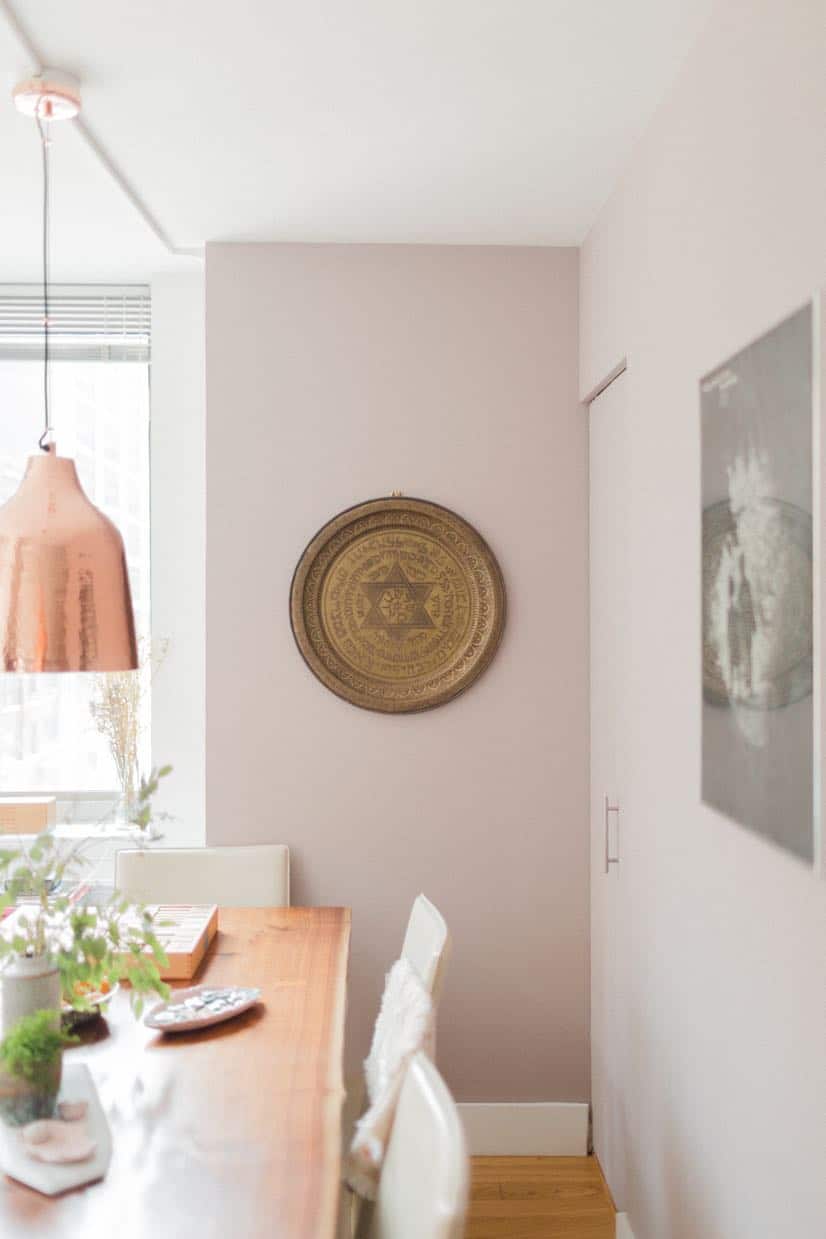
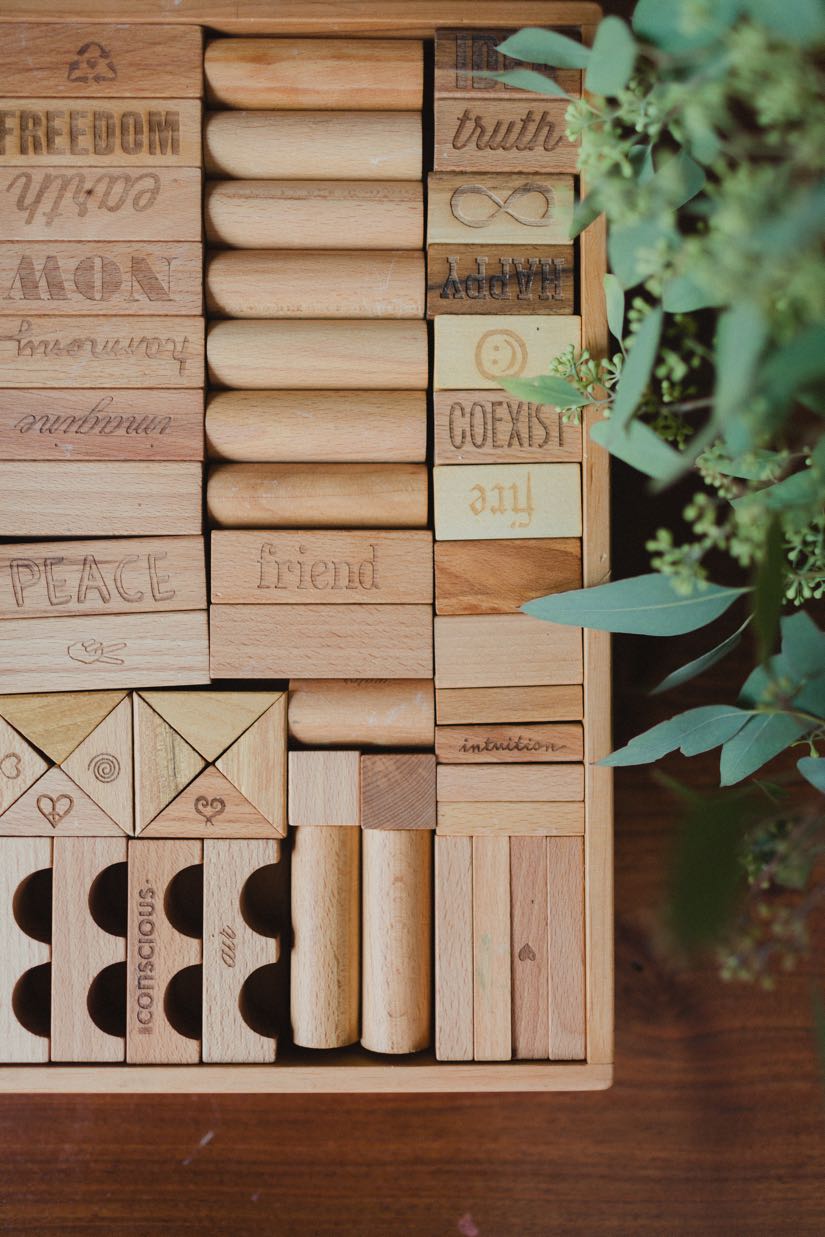
How did Judaism play a role in your upbringing?
I went to a Jewish school, which I loved. My parents were very traditional. We would have Shabbat every week and we celebrated all the chagim.
My grandmothers were both very connected to their Judaism. My mom’s mother always used to quote Pirkei Avot. When I was nine, she gave me a book, and she wrote in it:
Who is wise?
The one who learns from every person.
Who is brave?
The one who subdues his negative inclination.
Who is rich?
The one who is appreciates what he has.
Who is honored?
The one who gives honor to others.
(Talmud – Avot 4:1)
My dad’s mother was also very spiritual. I remember her taking me to synagogue on a Saturday morning when I was very young.
We grew up in a home in which our traditions were revered, celebrated, and a time for family to come together.
We had a beautiful mix, because my father was Sephardi, so he would sing tunes in the traditional melodies. I still hear them in my head when we read the prayers on Shabbat.
Our school was more Ashkenazi and very Zionist. Since I was young, I always connected with the spiritual side of Judaism, and there was something in me that was ignited and joyful when I was in touch with our Jewish traditions and exploring our heritage in Israel.
New York is where I explored the spiritual side of my traditional underpinnings.
Working in the fashion industry was an amazing experience, but it was also a very rigorous experience. I realized that the creative work I was doing wasn’t filling me up enough. It was a time in which I sought out Jewish spirituality.
I was introduced to a wonderful rabbi named Simon Jacobson, who runs the Meaningful Life Center. I started to attend his classes and learn about the religion from a spiritual perspective, and it added another dimension and a rich layer to what I had experienced growing up.
How does Judaism show up in your life now?
It permeates every moment.
Being a mother, I’m very conscious of the legacy I’m leaving.
I’ve got these two precious souls that are being entrusted to me and I’m their guardian. What am I teaching them? They have a mission in life and everything they do has an impact on the people around them and in the world around them.
In terms of the rituals that we carry out, we’re often singing Hebrew songs, from going to sleep and saying the Shema with our daughters to Shabbat dinners every week. I’m constantly calling my daughters by their Hebrew names, as well as their English names. For me, it’s so important to remind them of their essence and their roots and who they are.
The work I do now is very focused on Judaism, because it’s all about how we connect with rituals.
Creating textiles is one pathway into experiencing our traditions.
A few years ago, a friend asked me to create a Mexican-style challah cover for her. Along the way, I serendipitously met a woman who was working with a community of talented artisans in the Yucatan peninsula. There was a perfect fusion of three things I cared deeply about: textile design, jewish ritual, and social philanthropy. So, AHYIN was born. By investing in Judaica, by engaging with our religion, we can provide income to a woman many worlds away. It points to an interconnectedness.
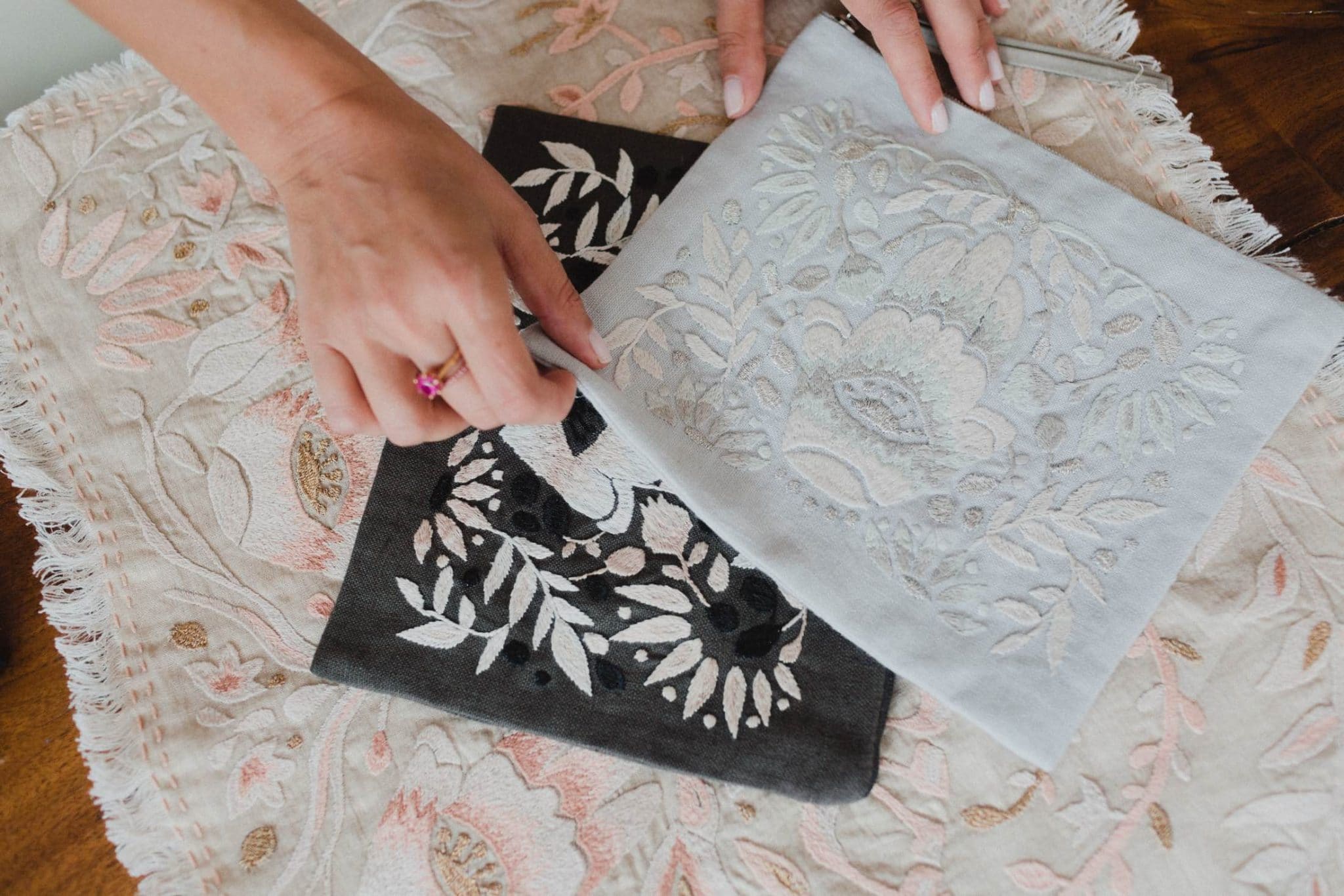
You say on your website that you bring spiritual Jewish ideas to life through your work. What is a spiritual Jewish idea and why is that your focus?
We have to connect with the underlying meaning of ritual in a way that speaks to a timeless place inside of us, in our soul. That additional layer is what I mean by “spiritual Judaism.” Connecting with the essence and the meaning of something that’s really beyond us.
The reason I feel so strongly about sharing my love for Jewish ritual and about making Judaica that people connect to is because I believe that we have such beautiful traditions that can bring meaning and purpose to our families.
Friends have come to me and said they love the idea of lighting candles with their children, but they don’t know how. I hope that the words I use and the pieces I create allow people to connect to these types of mitzvot and to share them with the people they love.

Do you have a personal mantra?
My mindset of the moment is that everything is an ebb and flow. Phases will come and go, and it’s okay if everything doesn’t exist in this phase or if things are not perfect. If things are wonderful, they’ll shift, and if they’re not wonderful, that will also shift.
Be at peace with the rising and falling of the tides around us.
What is something that you have not figured out yet?
How to manage my time.
I was used to working in a way where I could dive in creatively and give my all to a project, every part of me, physically, mentally, emotionally. Now, I have people whose lives depend on me, so I don’t have the luxury of time to completely surrender in the same way.
To be able to come in and out of that creative mindset and then to be able to go into the mindset of a mother, of a wife, of a friend and juggle these different roles is a work in progress. I don’t know if anyone ever perfects it.
What is something that you have figured out?
Is there anything? I don’t think so.
I don’t think I can claim perfection in any facet of my life, but I know that I’m enjoying being a mother, even though I haven’t mastered how to be in all those different places harmoniously. I feel very blessed that I have that problem, because there are so many things that I love: my children, my husband, my work, my family, my friends.
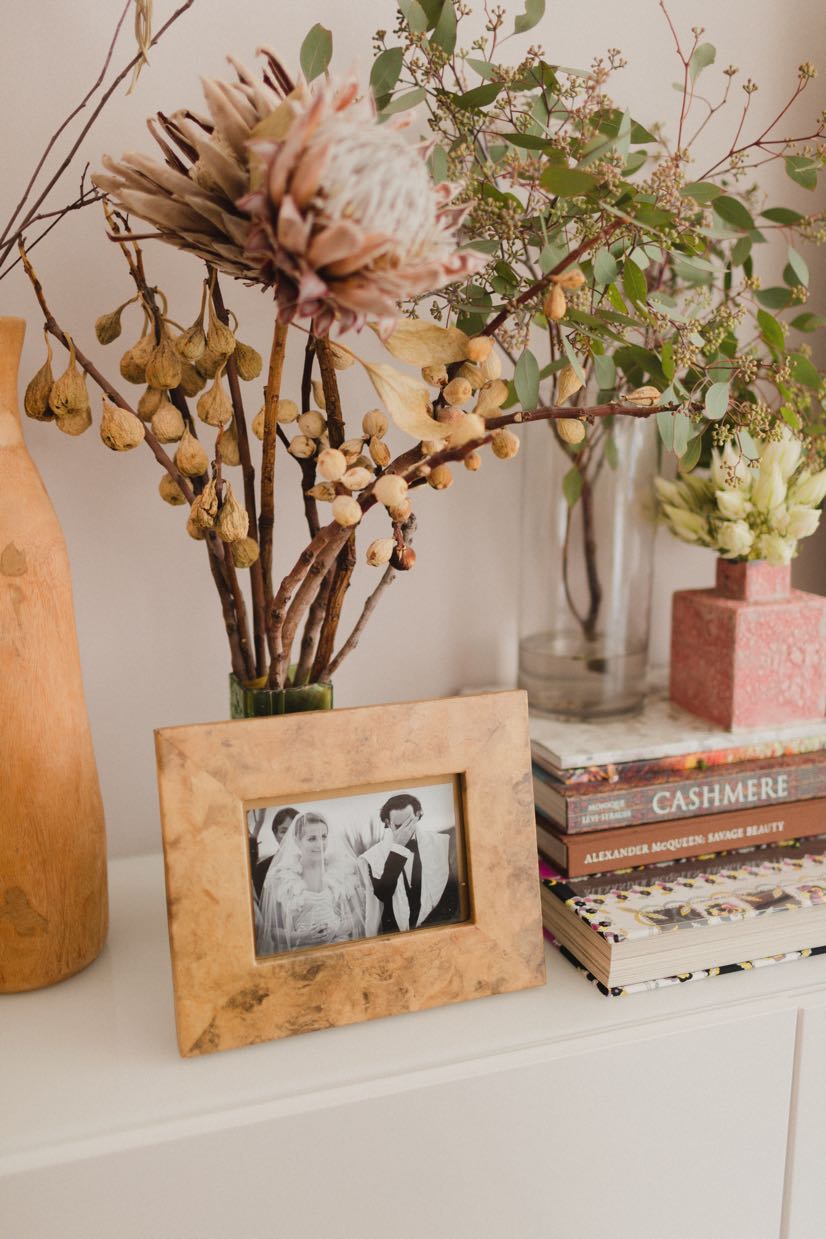

What is your favorite Jewish holiday and why?
I love Shabbat, because it’s once a week. It’s so powerful. We don’t have to wait once a year for it to come around.
It’s needed now more than ever as a space to disconnect from the day to day and reconnect with what’s eternal and with one another.
I love the rituals that we have on Shabbat: lighting candles, being able to bless our children. As a mother, it is such a beautiful experience to say these words. In that moment, to be able to give this outpouring of hopes and dreams and love to your child and to imagine the long story of their life and their livelihood and what they’re going to bring into the world. I love those moments.
Favorite Jewish food? Least favorite Jewish food?
I love the halek we have on Passover. In India – I guess it comes from Iraq – they used to strain dates, which was a really painstaking process of using a very fine muslin to strain the juice from the dates, and it gets mixed with crushed walnuts or crushed almonds. To me, that is a food that really captures the whole essence of that festival and that time.
Gefilte fish was totally banned in my house.
Is there anything else you want to share?
I believe we find our intuitive flow and a connection to godliness through our creativity.
I’m a textile artist and designer creating Jewish art. I’m a writer, I’m an illustrator, I’m a speaker.
Everyone has creative power that can be unleashed.
There’s a concept in Judaism called Chochmat Lev, which is wisdom of the heart. I think our creative practices are channels to access that wisdom of the heart that we all have.
How do we make decisions more easily? How do we hear the guidance that we need to hear? I think a lot of that is through creative work, at least that’s my current exploration and practice.
Photos by Bridget Badore
Thank you for visiting Arq!
Arq is no longer publishing new content. We hope you'll enjoy our archived posts.